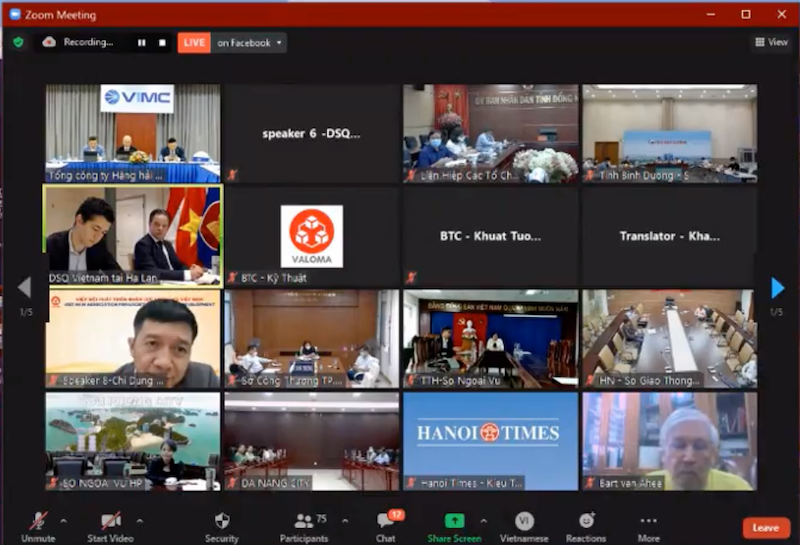Potential for logistics cooperation between the Netherlands and Vietnam
Many Dutch businesses are looking for investment opportunities in logistics in Vietnam.
The Netherlands and Vietnam can further promote cooperation in the logistics industry based on the potential of the Vietnamese market and the strength of the Dutch business community, local insiders said.
| An overview of the webinar. HNT Photo |
At the Netherlands-Vietnam Logistics webinar “Identifying opportunities -Connecting partners” on October 28, Dao Trong Khoa, Standing Vice Chairman of the Vietnam Logistics Association (VLA) said the logistics industry in Vietnam is growing 14% annually while imports and exports expanded at a double-digit rate every year.
Vietnam’s freight and logistics market was estimated at US$61.83 billion in 2019 with an expected annual growth of 4.9% by 2025, according to the August report by the Organization for Economic Cooperation and Development (OECD). In terms of overall logistics performance, Vietnam ranked 39 in the World Bank’s Global Logistics Performance Index and third among ASEAN countries.
“Therefore, the logistics industry not only brings opportunities for domestic companies but also foreign investors,” Khoa said.
Delegates at the meeting shared concrete strengths and potentials of the Netherlands and Vietnam.
Vietnam is prioritizing the development of logistics when many localities have boosted the construction or upgrading of ports, airports, and human resource training. However, it has still faced many difficulties in terms of capital, experience, technology, and technical capacity.
Meanwhile, the Netherlands is Europe's transit gateway and a leader worldwide in the field of logistics, with hundreds of years of sea freight experience and the application of breakthrough technologies of the fourth industrial revolution.
A developed transport system is also one of the conditions turning the Netherlands into a leading country in the field of logistics.
Up to 45% of goods are imported into Europe through Dutch seaports while about 90% of traffic on the Rhine River - Europe's largest freight inland waterway routes are controlled by the Netherlands.
At the seminar, many Dutch businesses expressed their interest in the Vietnamese market and in seeking cooperation opportunities in the field of logistics.
Currently, many international businesses are operating in Vietnam. The Vietnamese Government’s Decree 163 on logistics services allows foreign enterprises to set up wholly invested businesses in the country in the field of logistics.
Khoa from the VLA suggested Dutch logistics enterprises are encouraged to invest in infrastructure development here, especially in logistics centers. "Vietnamese businesses are keen on learning Dutch experiences in developing green and agriculture logistics," he said.
Being of the same mind, Le Quang Trung, Deputy General Director of Vietnam Maritime Corporation (VIMC) said recently the Vietnamese government approved a master plan for Vietnam’s seaport system development for the 2021-2030 period with a vision to 2050.
“It serves as a guiding document and presents a huge opportunity for the Netherlands to collaborate with Vietnam in such a promising and potential process,” he added.
He proposed to strengthen cooperation between two countries in developing seaport projects and building an information technology platform to provide all-inclusive chain solutions for clients.
At the event, Tran Thanh Hai, Deputy Director General of Agency of Foreign Trade under the Ministry of Industry and Trade said Vietnam hopes to find solutions to improve the quality of human resources in the field of logistics, exploiting the potential of Vietnam's seaport infrastructure system, promoting international trade and creating favorable conditions for businesses’ growth between two countries.
| In Vietnam, about 4,000 businesses operating in the industry are mostly small and medium-sized, of which 1% are 100% foreign-owned, 10% are joint ventures, and the remaining 89% are pure Vietnamese, according to the Vietnam Logistics Association. |










